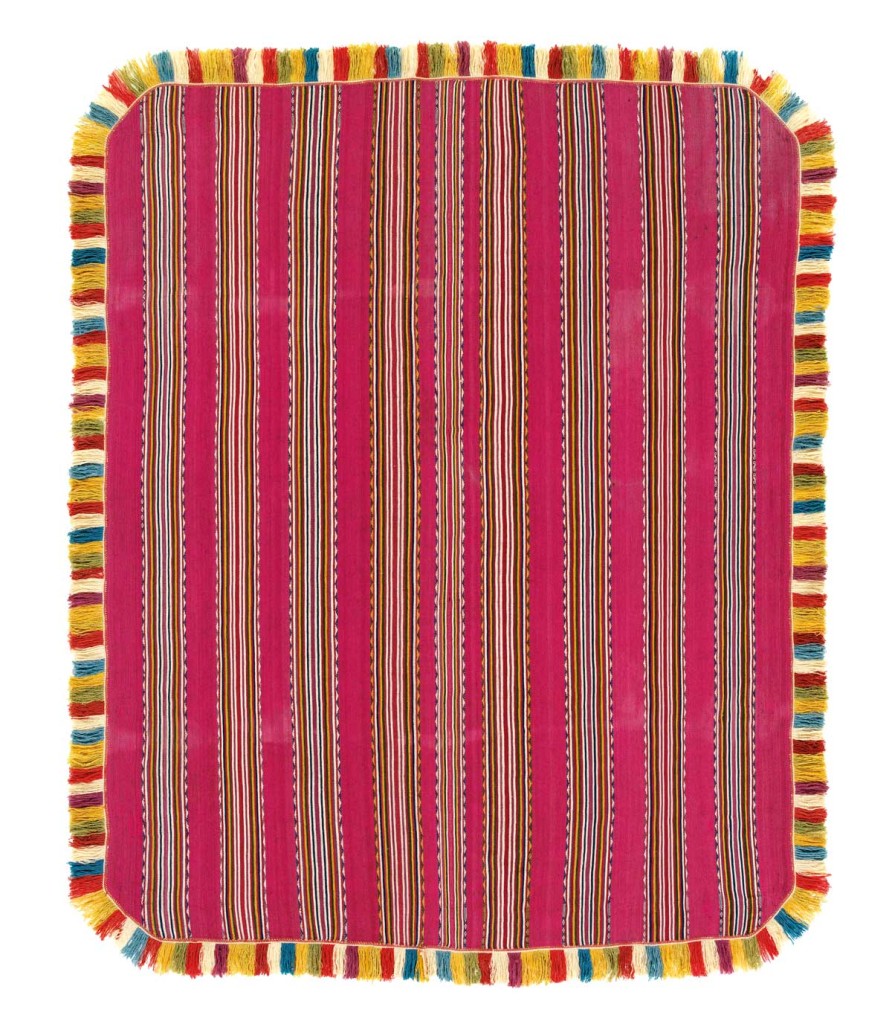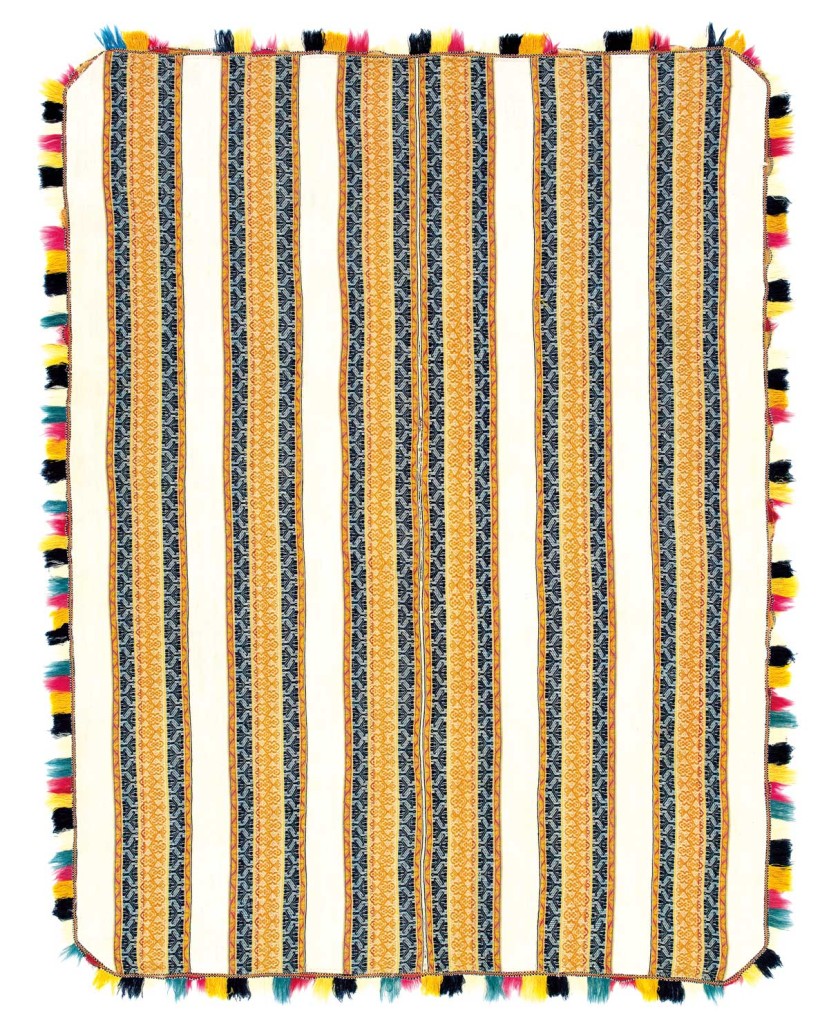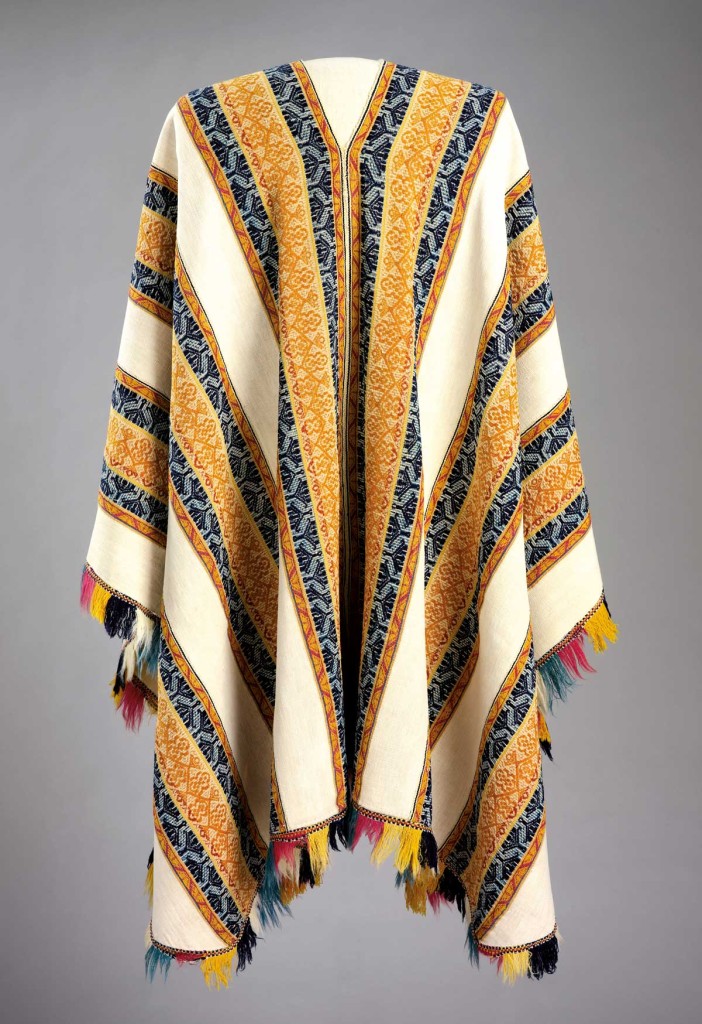Bolivian Aymara ponchos at Siegal Gallery, Santa Fe
During the 1970s, Giles W. Mead, then director of the Los Angeles County Natural History Museum, collected an exemplary group of twenty 17th and 18th century Balandrán-style Aymara ponchos from Bolivia. From 25 July to 26 August, the Giles W. Mead and Parry Mead-Murray Collection will be exhibited at the William Siegal Gallery, 540 S. Guadalupe St., in the Railyard Arts District in Santa Fe, New Mexico.
The Balandrán-style ponchos in the Mead Collection were first made in the highlands of Bolivia, Chile, and Argentina during the Spanish colonial period. It is likely that they were adapted from ponchos made by the Araucanian Indians of northern Chile. They present a fascinating example of the adaptation of a pre-Columbian garment and weaving technology for life in the post-Columbian world. They are named after a type of cape, sometimes with a hood, worn indoors by priests and scholars until relatively recently. These garments are untailored, usually sleeveless, and fasten only at the neck. They were worn for warmth, and largely cover the body, offering excellent protection against inclement weather. But perhaps the most significant connection between the garments is that people of status wore them, whether priests or village headmen. They communicated high status and identity, just as textiles did in the Andes in Inca times. Even their scale, averaging 200 by 150–175 cm, is much larger than the standard poncho or the smaller ponchito worn throughout the Andes. Highlights from the Mead collection, which is featured in the Summer 2014 issue of HALI, are presented here, accompanied by edited extracts from the forthcoming exhibition catalogue.

Quechua Balandrán-style poncho (detail), Iru Tambo region, Tapacari province, Cochabamba department, Bolivia, 17th–18th century. Warp-faced alpaca wool plain weave with stripes of complementary warp weave and a woven fringe, the red field composed of nine bands of stripes (listados), and supplementary designs. 1.52 m x 1.96 m (5’ 0″ x 6’ 5″). Giles W. Mead collection at William Siegal Gallery, Santa Fe

Jesuit Balandrán-style poncho, Quechua or Aymara culture, Bolivia, 17th–18th century. The white cotton field is assembled from six separate strips, each of five bands, with Spanish baroque designs that are perhaps interpretations of the indigenous pallay tipa laphi (picked zigzag with leaf) design, an undulating floral pattern that is itself probably an adaptation of a Spanish design. Warp-faced cotton plain weave with complementary warp–faced weave and woven fringe. 1.57 m x 2.03 m (5’ 2″ x 6’ 8″). Giles W. Mead collection at William Siegal Gallery, Santa Fe

Jesuit Balandrán -style poncho (detail), Quechua or Aymara culture, Bolivia, 17th-18th century. Warp-faced alpaca wool plain weave with complementary warp-faced weave and woven fringe, the purple field with six bands of design composed of the pallay tipa laphi (picked zigzag with leaf) design in the green and orange areas; the central blue areas are Spanish baroque designs. 1.60 m x 1.88 m (5’ 3″ x 6’ 2″). Giles W. Mead collection at William Siegal Gallery, Santa Fe
Subscribe to HALI from only £49.99 a year to read more from this article,

























Comments [0] Sign in to comment